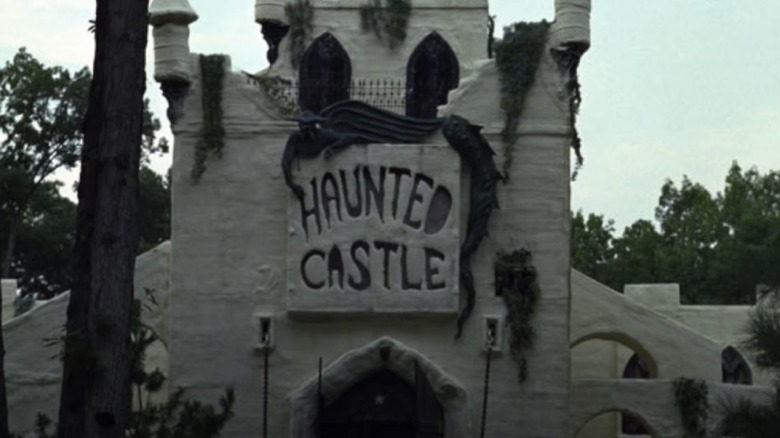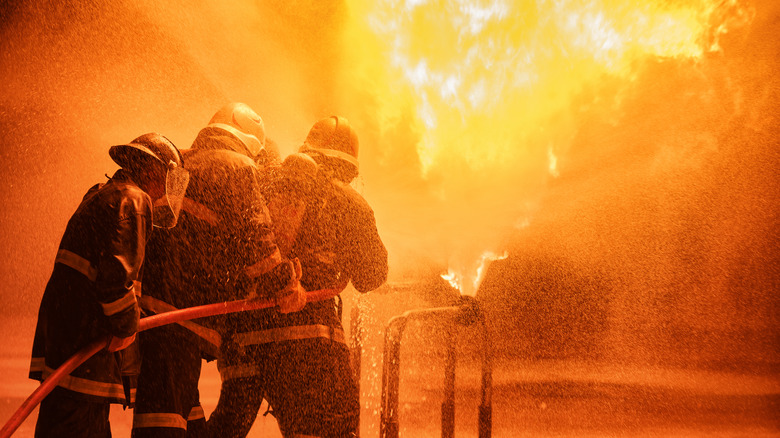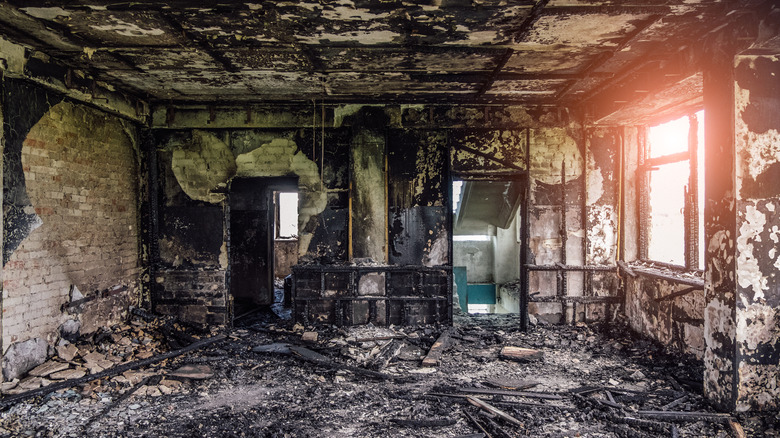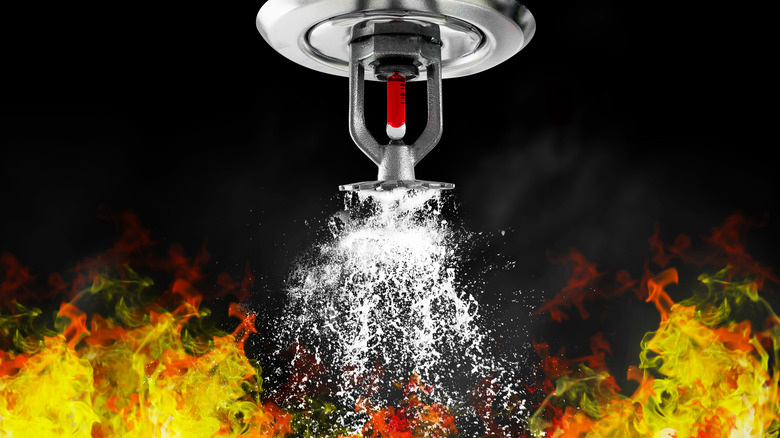The Truth About The Deadly Six Flags Haunted Castle Disaster
On the evening of May 11, 1984, tragedy struck at the Six Flags Great Adventure amusement park in Jackson, New Jersey. The park's Haunted Castle horror attraction was consumed by flames and left eight people dead — all teenagers — and seven more injured. What was supposed to be a fun event for a group of teens quickly turned into a nightmare.
The Haunted Castle was supposed to be a temporary attraction, but at the time of the incident, it had been in the park for five years. Per Queen's Chronicle, the attraction was made of aluminum trailers that were connected to form the Haunted Castle, which had a left and right side that mirrored each other. In the attraction, visitors went through narrow corridors and made their way to the end while being frightened by costumed workers. Lights, sounds, and other special effects enhanced the haunted atmosphere.
The fire started at about 6:35 p.m. inside the Haunted Castle. Firefighters immediately responded to the scene, and the fire was under control by 7:45 p.m. Initially, it was thought that all those inside the attraction had escaped and seven people were brought to a hospital for smoke inhalation, per The New York Times. Upon inspection of the debris, however, firemen discovered eight bodies that were so burned that they were unrecognizable.
What caused the fire?
Based on experts' investigation, the fire started when a visitor in the Haunted Castle used a lighter to illuminate his surroundings. The lighter caught a foam padding on the wall, and the fire quickly spread throughout the structure, per NFPA Journal. The Haunted Castle's interior was constructed with wood partitions and plywood, as well as foam padding on the walls. Furthermore, fabric and paper were used for the decorations — all highly flammable materials.
At the time of the incident, there were approximately 30 people inside the Haunted Castle. Most who saw the smoke immediately made their way out, but some passed it off as part of the attraction's theatrics. Just a few minutes after the initial spark, the structure was engulfed in flames. The eight teens found dead inside ranged in age from 15 to 19 years old, and all of them died from carbon monoxide poisoning and smoke inhalation. Out of the eight, seven victims were discovered in a corridor near the exit.
No safety precautions
It's necessary for amusement parks to provide safety measures and undergo regular safety checks to avoid untoward accidents from happening. However, the Haunted Castle attraction was supposedly a temporary structure, and because of that, it wasn't required to follow the strict building codes mandatory for permanent buildings (via New Jersey 101.5). In fact, the Haunted Castle did not have smoke alarms or a sprinkler system at the time of the accident.
Although the owners of Six Flags were seemingly the ones to blame for the catastrophic fire, they followed all the rules when the Haunted Castle was constructed. They obtained the necessary permits and even opened the attraction for inspection, per the The New York Times. Officials at the Jackson Township — where the amusement park is located — said a building permit wasn't necessary and the amusement park wasn't told to install sprinklers in the Haunted Castle. During the construction, the attraction wasn't required to have a permit as it was just made of trailers and would not be erected on a permanent foundation.
New Jersey sues Six Flags
Months after the fire, New Jersey sued Six Flags and two of the amusement park's managers for aggravated manslaughter. In court, the jury heard testimonies from the two parties as well as some visitors who witnessed the blaze, The New York Times reported. After 13 hours of deliberation, the jury decided that Six Flags was not guilty of manslaughter and chose to acquit the company. Per one jury member, the decision was made because the amusement park did not operate with the knowledge that possible deaths that could occur. Additionally, the Haunted Castle was constructed following all the necessary procedures and did not violate safety protocols based on Jackson Township's building code at the time.
The Six Flags Haunted Castle fire prompted a change in the National Fire Protection Association's NFPA 101 Life Safety Code. A new section to the guidebook was added — Special Provisions for Special Amusement Buildings — which consists of the new requirements for buildings such as the Haunted Castle (via NFPA). The new requirements included properly installed and maintained sprinkler systems and smoke detection systems.



